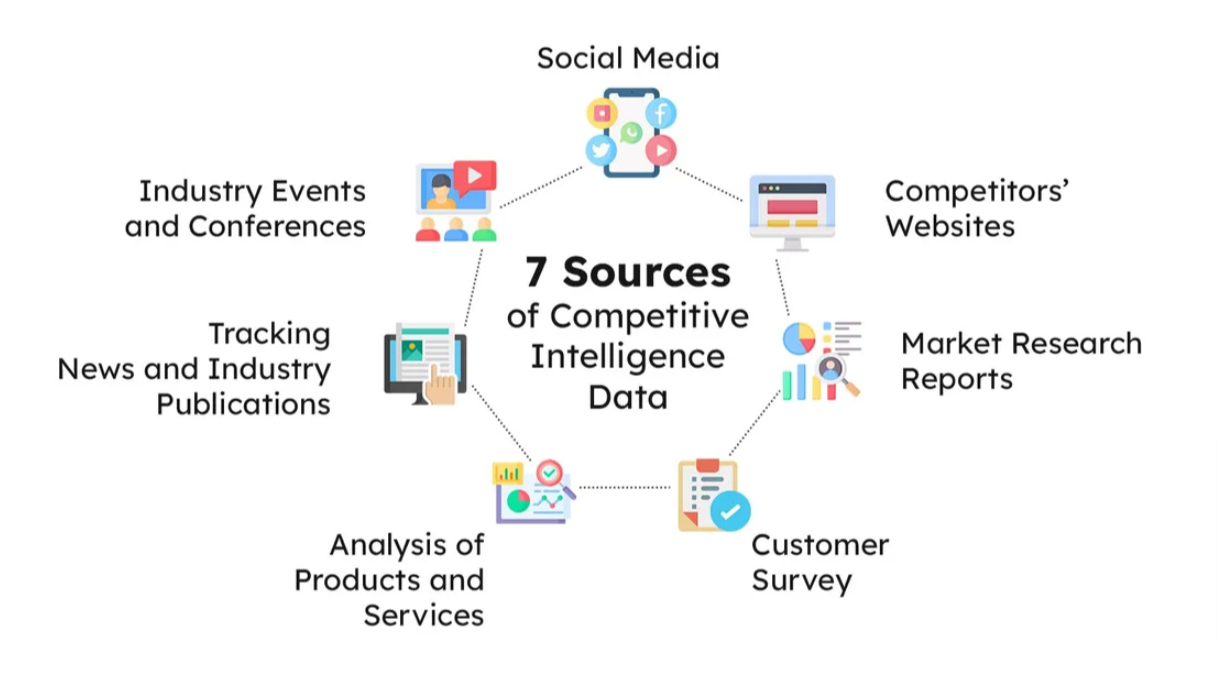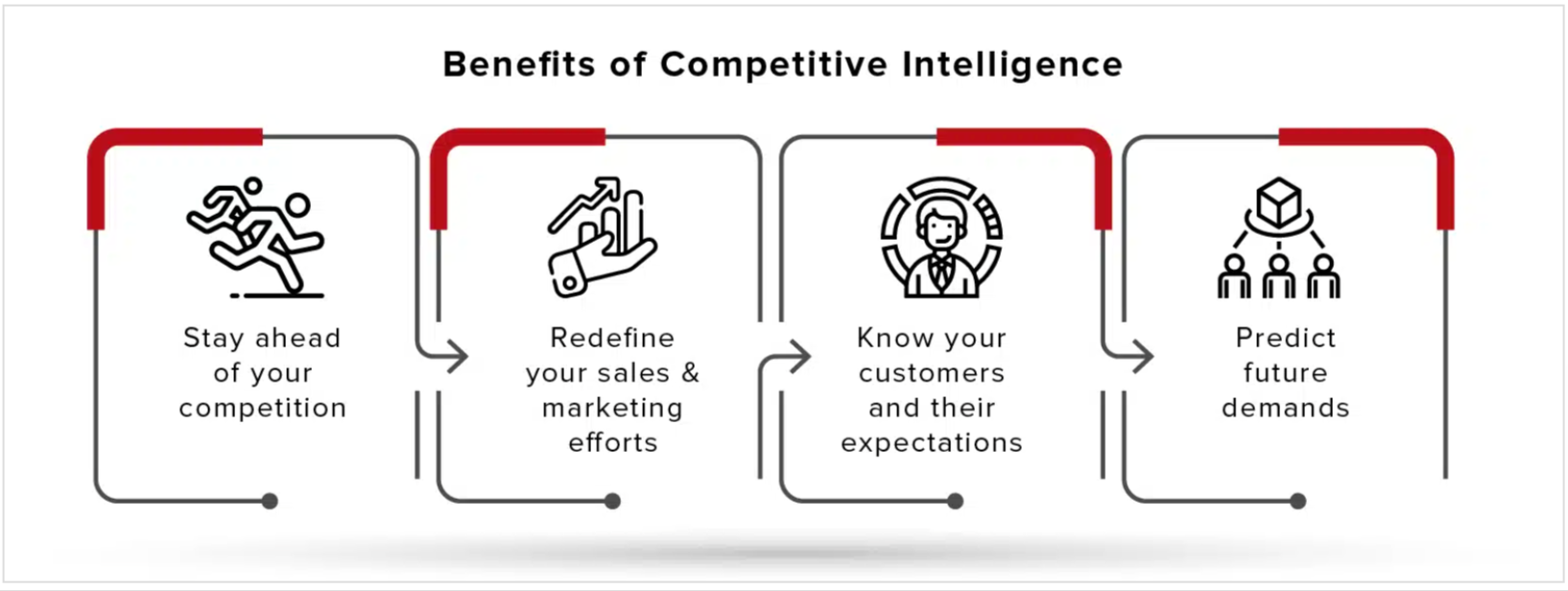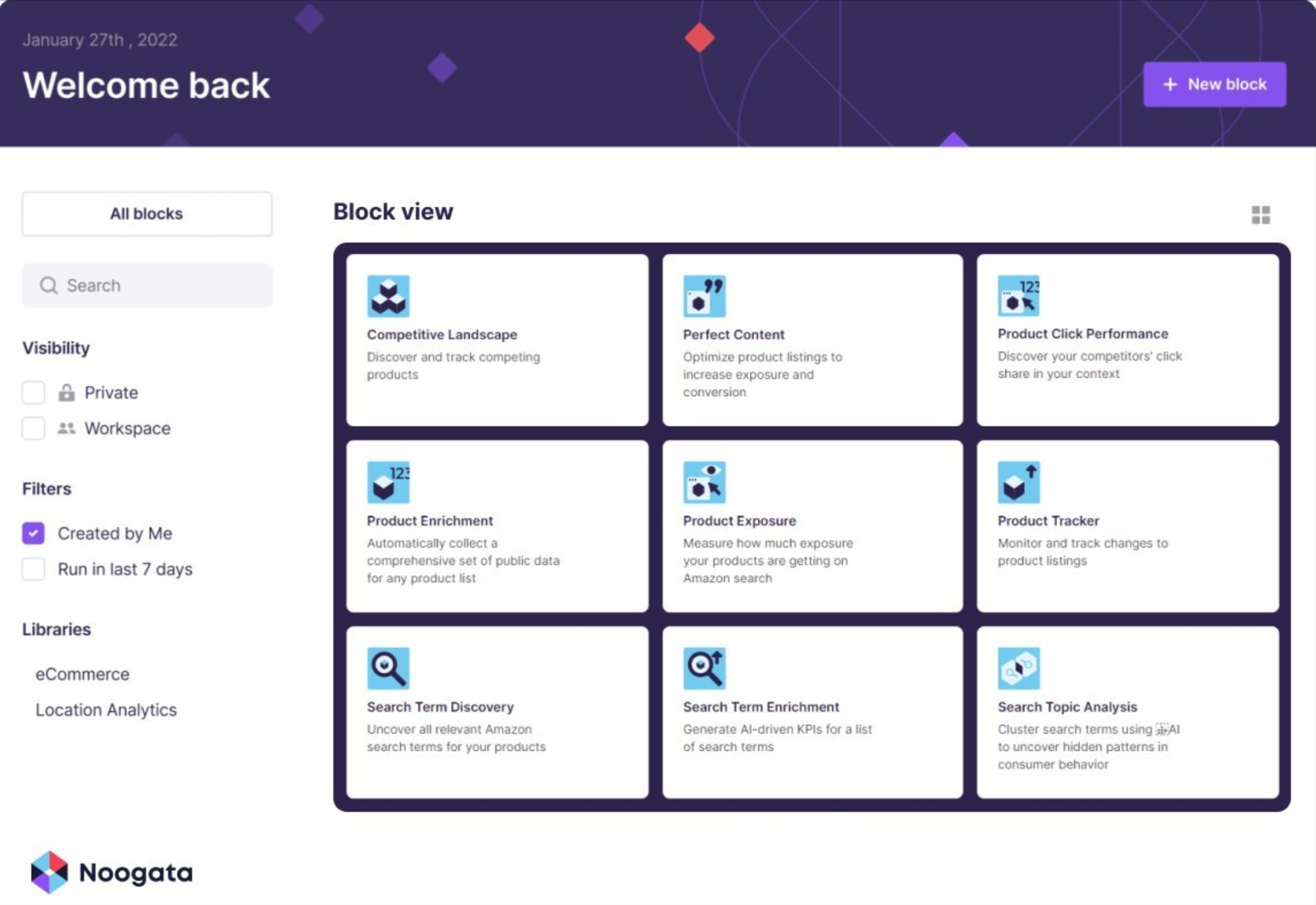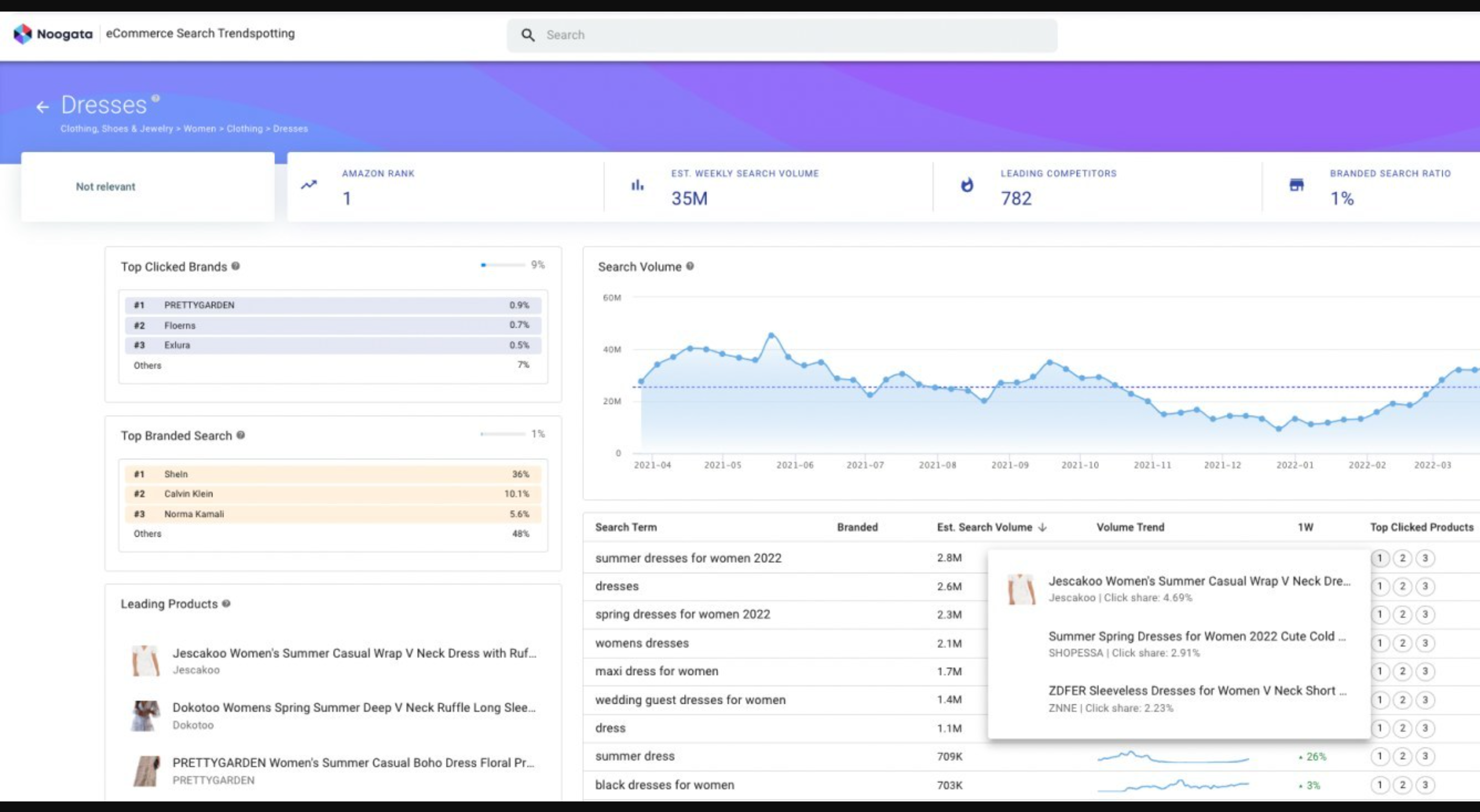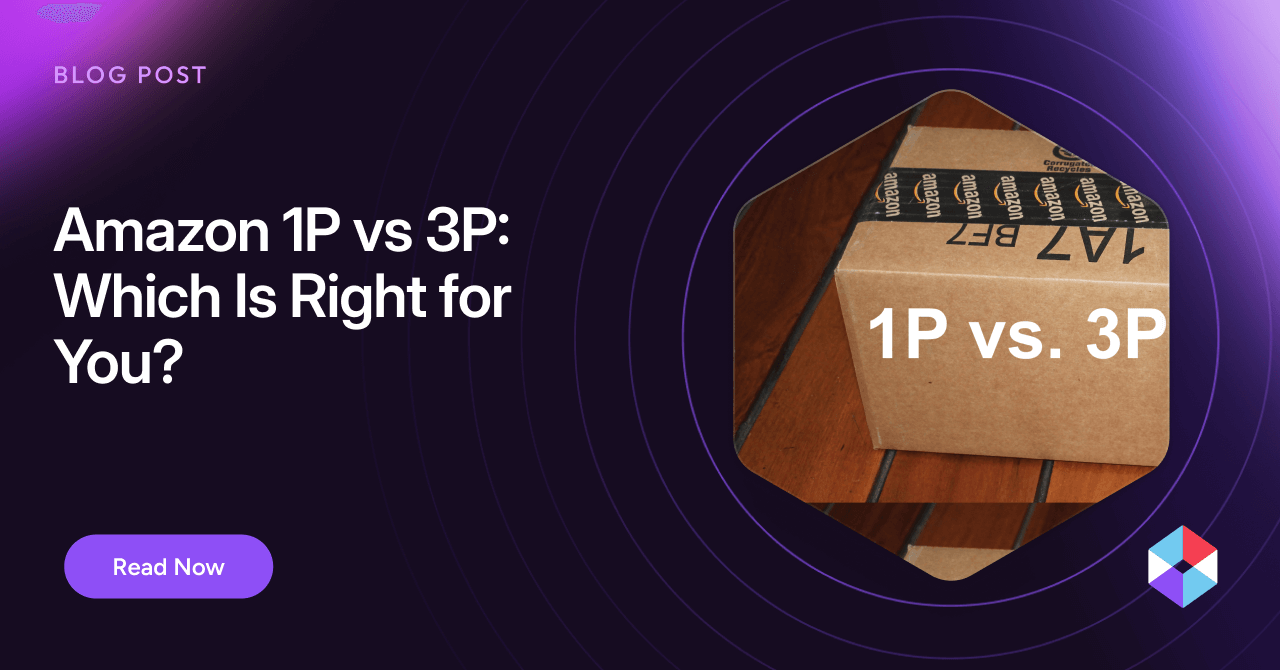Amazon Marketplace offers sellers easy access to a trusted platform with the largest eCommerce customer base in the world, but there’s a catch. All of your competitors are invited, too. On Amazon’s digital shelf, your products are side-by-side with offerings from rivals constantly looking to beat you on price, quality, and listing appeal. To come out ahead, you need to understand what they’re doing, how effectively it’s working, and what you can do to outmaneuver them. In other words, you need to gather competitive intelligence.
Within the Amazon marketplace, the competition between sellers is fierce—nearly six out of ten items sold on Amazon come from third-party sellers. This means Amazon is less like a single store and more like a self-contained eCommerce ecosystem. Every savvy seller knows that if they want to win the digital shelf, they have to understand their customers—but the biggest advantage will go to sellers who also take the time to understand their competition, and take action based on the insights they can obtain.
Gathering and acting on competitive intelligence can initially seem daunting, but it’s worthwhile. In this post, we’ll show you eleven steps to gain success with Amazon competitive intelligence.
What is Amazon Competitive Intelligence, and why is it so important?
Competitive intelligence refers to the information you can gather on businesses and individuals selling similar or identical products to yours. Competitive intelligence relies on legal, ethical information-gathering practices, not data breaches.
You can learn about pricing strategies, organizational structures, marketing tactics, workflow processes, and more through competitive intelligence. It provides insights that can help you anticipate your competitors’ moves and make a stronger appeal to the consumer segments you’re trying to win over. Websites, product listings, social media content, financial reports, and other public postings are some of the main data sources that can be analyzed through the lens of competitive intelligence.
Amazon competitive intelligence focuses entirely on competition within the Amazon Marketplace. More sellers than ever are trying to carve out space on Amazon’s platform, and three-quarters of customers check product listings for pricing and reviews before purchasing. The best way to ensure that your store gets selected is to use Amazon competitive intelligence to improve your position on the digital shelf and become the most appealing option.
What are the benefits of Amazon Competitive Intelligence?
By leveraging competitive intelligence on a platform like Amazon, you can better understand the market you’re operating in and make smarter choices about how to sell your products.
Studying your competitors’ practices shows you how other sellers interpret and prioritize your customers’ expectations. When you’re clear on what matters the most to the audience you’re trying to convert, you more effectively meet their needs. This can involve not just obvious things like pricing and product features, but also customer service aspects like delivery speed and return policies.
Competitive intelligence will also highlight differences in your advertisements and product listings, giving you actionable insights for improving your messaging, descriptions, photos, video content, and everything else that influences customers to finalize a purchase.
11 Steps to Success with Amazon Competitive Intelligence
Let’s take a closer look at specific actions you can take to capitalize on the power of competitive intelligence. Here are eleven ways it can help you succeed in Amazon Marketplace:
1. Identify Your Competitors
Before you can learn what your competitors are doing, you have to know who your competitors are. On a platform as large as Amazon, sellers in your niche can fly under the radar if you aren’t actively searching them out. The first step in competitive intelligence gathering is to systematically identify the sellers targeting the same buyers as you.
2. Find New Opportunities for Marketing and Advertising
Competitive intelligence can reveal that other sellers are targeting consumer segments you might be ignoring, experimenting with new advertising formats, or using marketing tactics you hadn’t thought of. When you discover these differences, it opens up opportunities for you to expand or revise your approach.
3. Benchmark Against Competitors
Not all competitors are created equal, and the only way to know which ones are inconsequential and which are eating your lunch is to engage in benchmarking. This requires you to identify key goals (like sales volume), determine the metrics you can use to measure them, and see how you stack up against other sellers. The ones who are outperforming you are the ones to watch closely.
4. Research Keywords to Improve Search Rankings
The top keywords for your products may seem obvious, but customers don’t always search in predictable ways. Use competitive intelligence to find out what keywords your competitors use, how they work them into their product descriptions and image “ALT” tags, and which ones they choose to place in listing titles. This information will help you optimize keyword usage to match customer intent, improve search ranking performance, and find new opportunities.
5. Adjust Your Pricing Strategy
Price is often the deciding factor when shoppers are choosing between sellers. Use competitive intelligence to track prices and adjust your pricing strategy so that you’re staying in the sweet spot—which means offering a better deal than your competitors, but not underpricing your products to the degree that it suggests they’re lower quality. Prices on Amazon can fluctuate daily, so it’s essential to monitor them continuously.
6. Analyze and Optimize Product Listings
Product listings with detailed descriptions, high-quality photos, video content, and positive reviews will consistently outperform barebones listings. The listings of high-performing competitors can set the standard and give you plenty of ideas for improving your own listings, and competitive intelligence tools simplify the process.
7. Monitor Sales Performance
Benchmarking your competitors will give you the lay of the land at a particular moment in time, but your relative positions won’t always stay the same. Upstart competitors that were barely worth your notice in one quarter can become your biggest rivals in the next. Ongoing sales performance monitoring will ensure that you aren’t overlooking sellers making new inroads into your target market, while also helping you keep an eye on your own numbers.
8. Use the Right Competitive Intelligence Tools
Competitive intelligence involves sifting through large amounts of data scattered in many locations. Doing it manually is time-consuming and labor-intensive—and isn’t nearly as effective as using AI-based tools to automate the process. Software solutions like Noogata can handle all the critical elements of competitive intelligence gathering on Amazon, from tracking competitor activity to delivering data-driven keyword and pricing recommendations.
9. Monitor Feedback to Improve the Customer Experience
The comments, questions, and reviews customers post to your competitors’ pages can be full of insights you can apply to the experience you create for your customers. For example, you might see customers asking for new features or delivery options on products you also sell, and by acting quickly, you can start offering them before the other sellers do.
10. Stay Updated on Market Trends
The currents of consumer sentiment can shift very quickly on Amazon, and you won’t always notice right away if you aren’t looking in the right places. AI-powered intelligence-gathering tools can help you monitor search terms in your product category, new product offerings, and other early indicators that your market is evolving.
11. Continuously Improve, Innovate, and Differentiate
If you want to dominate Amazon’s digital shelf and outsell your competitors, you can’t stagnate. You want to make improvements as soon as you see the opportunity to do so, respond quickly to competitor tactics and new market trends, and stand out in the crowded marketplace by offering innovative product features, best-in-class customer service, and a unique brand experience.
With actionable Amazon competitive intelligence, you won’t be stumbling around in the dark trying to figure out the best moves to make—you’ll be armed with data-backed insights based on a real-time overview of your market.
Smart Tools Deliver Insightful Intelligence
Amazon makes it easy to get into the eCommerce game and start selling to a vast and diverse audience, but that low barrier to entry applies to your competitors, too. The best way to rise above the others is to use Amazon competitive intelligence to study their tactics and find ways to improve on them.
Gathering intelligence on your Amazon competitors may not rise to the level of James Bond intrigue, but just as Q’s high-tech gadgets save the day for Agent 007, competitive intelligence tools like Noogata can give sellers like you the winning edge.
Test Noogata’s AI Amazon Growth Solution out today to get a firsthand look at the game-changing insights it can deliver your business.

